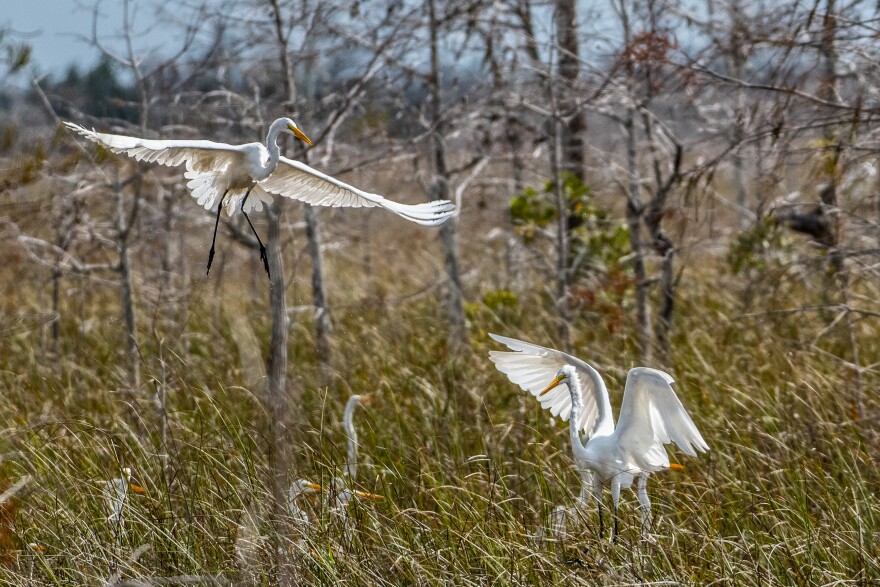Late wet season rainfall and a tropical storm in 2021 produced a banner year for Everglades wading birds, according to the latest tally by the South Florida Water Management District.
Across the expansive marshes, from water conservation areas in Palm Beach, Broward and Miami-Dade counties, to Everglades National Park, the number of nests counted in the 2021 season surged past 100,000. That’s comparable to nesting in the 1930s and 1940s, the report said, when drainage work had just begun across the mashes.
The number is the second highest since counting began.
Wading birds thrive when there's a lot of water, followed by a quick drydown that pools prey in easy-to-fish areas so the birds can feed their chicks. That’s what happened leading into the 2021 nesting season. Rainfall surged in October 2020. Then Tropical Storm Eta dropped more than 20 inches of rain over the Everglades in November.
That led to the second highest nest count on record. The 2018 season, the year after Hurricane Irma drenched South Florida, remains the highest.

The South Florida Water Management District has been tracking wading bird nesting since 1996 as a way to measure Everglades health. Nesting birds reflecting historic water patterns, before the Everglades were dammed and drained.

Beginning in August 2020, water managers began moving more water into the park as they continue working on bridging parts of Tamiami Trail and installing culverts.
But while that work helped some birds — white ibises flourished — others including snowy egrets remained stagnant.
As a report card, the bird counts have shown that over two decades when there’s heavy rain or better water management, the birds have responded, especially in coastal areas. The report concluded that so far restoration work has not been “powerful enough to nudge the timing of nesting, the ratio of tactile forages [including roseate spoonbills and woodstorks], or the numbers of nesting snowy egrets further.”
For sustained overall improvements, the report warns, full restoration needs to be achieved.
Copyright 2023 WLRN 91.3 FM. To see more, visit WLRN 91.3 FM.




